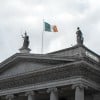Bobby Sands IRA Hunger Strikes 30 Years On
For those of you who have an interest in Irish Politics, the 5th of May 2011 will mark the 30th anniversary of the death of IRA prisoner Bobby Sands on Hunger Strike. Today in Ireland, while all the lies of 'Peace' have been told, people continue to be murdered and brutalised by 'republican' terrorists (criminals).
Terrorism – A Fairly Secret Army - Chapter 5 – Prisons and Hunger-strikes.
In order to try and understand the direction taken by the republican movement (Sinn Fein/PIRA) particularly the Northern Command from the late 1970s early 1980s it is essential to try and understand the role played by republican prisoners and in particular their Hunger Strikes of 1980 and 1981. Prior to the 1st Day of March 1976 IRA prisoners were accorded the rights of political prisoners, however, once again the British Government showed their lack of understanding of the northern conflict when they removed that political status from IRA and other republican prisoners who were housed in Crumlin Road Jail (remand), Long Kesh Jail (sentenced) and Armagh (women’s jail). It was inevitable that the removal of political status from republican prisoners would bring about a campaign of protest as those republican prisoners believed their own actions to be political rather than criminal.
In their book The Provisional IRA Bishop and Mallie believe that republican prisoners played a pivotal role in relation to the future direction of Sinn Fein/IRA when they say:
In the late seventies and early eighties events inside the prison (The Maze/Long Kesh) were as important as events outside and the evolution of the republican movement into its current shape is a result of a sequence of actions and reactions that reverberated back and forth over the prison walls.[1]
Following the removal of political status from republican prisoners the British authorities tried to force Irish republicans to wear prison uniforms rather than their own clothes. Kieran Nuggent (RIP) was the first republican prisoner to refuse to wear the prison uniform and so the blanket/dirty protest began. Republican prisoners were left naked in their cells and only had a blanket to cover them. This then developed into a dirty protest where prisoners refused to leave their cells and human excrement, urine and waste food were left on the cell floors or rubbed on to the walls. The conditions were filthy and inhuman. The best account I have ever read from inside Long Kesh relating to this period was a book by IRA hunger striker Bobby Sands entitled One Day in my Life.[2] This short book by Sands highlights the inhumanity of what was a totally unnecessary set of circumstances created by a distant and uninterested British Government.
The blanket/dirty protest went almost unnoticed for four years by those in authority. There was a great deal of brutality in the prisons and as a result dozens of prison officers were killed by the IRA on the outside. By the end of 1980 the republican prisoners decided to go on hunger strike to try and draw international attention to their plight. Several weeks into the first hunger strike and on the night that IRA hunger striker Sean Mc Kenna was expected to die a senior British Civil servant offered a deal to the republican prisoners. The IRA leadership in Long Kesh Prison accepted the deal and called off the hunger strike.
However, the British withdrew the deal and a second hunger strike was inevitable. There are many republicans who believe that the British would have quietly granted the prisoners demands if given time and that a second hunger strike was simply a waste of human life. However, it is widely believed that the political leadership of the republican movement wanted the second hunger strike as they had seen how people were starting to react to the first hunger strike. The political leadership believed that they could make political gain from the hunger strikes. So it was then that on the 1st of March 1981, Bobby Sands began a second hunger strike in Long Kesh. On the first day of his hunger strike Sands stated:
I am dying not just to end the barbarity of the H. Blocks (Long Kesh), or to gain rightful recognition as a political prisoner, but primarily because what is lost in here is lost for the republic and those wretched oppressed, whom I am proud to know as the risen people.
Bobby Sands would lead a hunger strike that would see ten young Irish men die. The hunger strike in terms of its political demands was a failure although the British would eventually return political status to the prisoners. However, outside the prisons Sinn Fein would find a new political life line as a result of the wave of public sympathy for the hunger strikers. People who had never supported Sinn Fein or the IRA were out raged that Prime Minister, Thatcher had allowed ten young men die for a few simple demands. Shortly following Bobby Sands commencing his hunger strike the MP (Member of Parliament) for the electoral constituency of Fermanagh and South Tyrone, Frank Maguire died. The death of the very popular Frank Maguire presented an opportunity for Sinn Fein to put Bobby Sands forward as a hunger strike candidate for the Fermanagh/South Tyrone seat.
Outside the prisons the republican leadership debated about whom Sands would be representing and under what banner he would run for election. The republican movement wanted to maximise the vote for Sands which in turn they believed would show the world outside the north that their cause was just. Eventually at a meeting in County Monaghan in the Irish Republic it was decided that Sands should stand for election simply as an H-Blocks candidate rather than for Sinn Fein, republicans believed this could maximise the vote as people could vote on the single prisons issue rather than anything more closely associated with militant republicanism. The politicos within the republican leadership knew that they could capitalise on any significant vote achieved by Sands in subsequent elections whether Sands lived or died.
John Hume (Nobel Peace Prize Winner) and leader of the SDLP (constitutional nationalist/Catholic) withdrew his party from the Fermanagh and South Tyrone election when he stated:
“We will not do the British Government’s dirty work for them”.
However, behind John Hume’s publicly stated position lay the reality of the situation at that time which was that the public’s sympathy with a young Irish Catholic dying from hunger would have wiped the SDLP out in one of its strongholds. Bobby Sands was elected with a majority beyond the imagination of even the greatest enthusiasts of his election campaign including myself. The unionist candidate who was defeated by Sands was devastated when he publicly stated:
“I never thought the decent Catholics of Fermanagh would vote for the gunman”
These comments by the defeated unionist candidate show clearly that unionists had failed to grasp the fact that the Catholic community were not voting for a gunman, but were voting for a young Irish Catholic who was being starved to death by an uncaring British Government. On a visit to Belfast on the 28th of May 1981, British Prime Minister, Thatcher showed her ignorance of militant republicanism and Catholic sympathy for the hunger strikers when she said:
“Faced with the failure of their discredited cause, the men of violence have chosen in recent months to play what may well be their last card”.
The IRA responded to Thatcher’s statement by killing a police officer. Thatcher in her ignorance of the Irish problem had given the republican leadership the credibility and sympathy they had craved for so long. Brendan O’Leary supports this view when he states:
“Thatcher certainly miscalculated the consequences of her obstinacy: Sinn Fein was able to ‘widen the battlefields’ and become an electoral force”. [3]
This new surge of ‘popularity’ for the republican movement did not go un-noticed by loyalist terrorists. Up until the hunger strikes the loyalist death squads were reactive. The loyalist gangs were made up of mainly criminal elements some of whom had been moulded and guided by the British Secret Services. The heightening of the republican campaign through the hunger strikes with demonstrations, rioting and murder brought about a change in the style of loyalist terrorist activity. Loyalist terrorists in the form of the Ulster Volunteer Force (UVF) and Ulster Freedom Fighters (UFF) were no longer prepared to be simply reactive to republican violence. As the older members of the loyalist terrorists were removed through the use of Super-grasses (terrorists who turn State evidence) they were quickly replaced by younger ‘more’ ruthless activists, who began a pro-active campaign of murder against the Catholic community.
It is important to understand the role and nature of the loyalist terrorists within the northern conflict. While republicans had access to a pool of Catholics all over the Island of Ireland and had within their ranks people from many walks of life, loyalist terrorist groups were mainly made up of what was left over when Protestants who wanted to be active in the conflict had joined the British Army, RUC, Prison Service, Secret Service and so on and so forth. So in effect loyalist terrorist groupings were made up of the left overs. This meant that loyalist terrorists had many criminal and unsavoury elements within their ranks from the very outset. Some of the death squads they established such as The Shankill Butchers show clearly that many loyalists belong in the hall of fame with child sex killers Myra Hindley and Ian Brady. Many ‘republicans’ would later fall into the same category.
The 1981 Sinn Fein Ard Fheis (national conference) would provide the platform for Danny Morrison, a leading republican at that time, was to put the theoretical nail in the coffin of the IRAs southern command lead by O’Bradaigh when he asked the delegates:
“Will anyone here object if with a ballot paper in this hand and an armalite in this hand we take power in Ireland?”
The northern command of the republican movement were not stepping back from militant republicanism because they realised the futility of violence, but wanted to adopt a twin track approach because they believed that an electoral mandate could be just as useful as a weapon of coercion against the Protestant people in the north as the armalite. This twin track approach would also help the republican movement build on its international reputation particularly among Irish Americans who would be even more generous with their dollars without having to feel too guilty about the consequences of their naivety.
The policy was fully endorsed and it was time for the southern leadership to step aside as the northern leadership under Mc Guinness and Adams were preparing to take the republican movement to the next level. The first opportunity for the northern politicos to test out their electoral mandate with the sympathies of the hunger strikes still fresh in people’s minds was in October 1982. I was still only a young teenager during this period but had already been in the republican movement for two years. We were excited about the possibility of having people elected and gaining recognition for our cause, of course I was only listening to what I was being told.
The elections were for the new Assembly in Northern Ireland which had been established by the Secretary of State for Northern Ireland, James Prior. The new Assembly was the culmination of many months of hard work by Prior and some of the north’s constitutional politicians. It was the chance that everyone was waiting for. Many believed that Sinn Fein would be unable to poll anything like the hunger strikers; however, Sinn Fein won five seats. Sinn Fein got 64, 191 votes for the new Assembly. The northern domination of the republican movement was reflected in the makeup of the Ard Chomhairle (ruling body of Sinn Fein), presided over by Gerry Adams. By 1986 only six of its members were from the south of Ireland. Only one woman had a place at leadership level of the republican movement. Gerry Adams and Martin Mc Guinness had a seat at both the table of the Ard Chomhairle of Sinn Fein and the IRA Army Council.
By 1985 Sinn Fein had become well established, yet there is no doubt that the IRA were still in control of Sinn Fein, in terms of leadership personnel. In 1986 there were eight members of the Ard Chomhairle in the IRA, clearly being controlled by the IRA. This control was summed up by the IRA Chief of Staff, Kevin Mc Kenna in 1994 when during an interview he was commenting on the talks between the British Government and the Republican leadership, he said:
“As long as the boys with the balaclavas are there to watch what is going on we will be alright”.
Kevin Mc Kenna was and is a man of few words and on occasion when I was being interrogated by the British, Kevin Mc Kenna was referred to by my interrogators as the executioner. In 1983 Sinn Fein, President, Gerry Adams was elected MP for West Belfast. The politico/militarist leadership of the republican movement in the north were pushing ahead with their dual strategy. Violence in the north was nowhere near as high as it had been in the early seventies and so in order to take more control of IRA activity the northern command reduced the number of its active IRA members from 1000 down to 250. The IRA campaign while demanding much in terms of weapons, safe houses and so forth only needed a relatively small number of actual killers to keep their campaign going.
Mc Guinness and Adams retained their seats at the table of the IRA Army Council. The IRA Army Council remained the supreme Governing body of the republican movement, its irregular meetings determining IRA policy and the way forward for the republican movement. So it was that some within the republican leadership such as Mc Guinness and Adams believed that the best way forward was through the twin track approach of the ballot box in the one hand and the armalite in the other, this strategy meant that IRA leaders such as Kevin Mc Kenna could continue with his single minded military campaign. So it was that the twin track approach could keep everyone happy, however, that could not last forever as republicans knew from their history.
Related Discussions
- 16
Bobby Sands 29 years dead today
by theirishobserver. 15 years ago
On the 5th day of May 1981 the world was awakened to the plight of IRA prisoners in Long Kesh Jail in Northern Ireland when Bobby Sands died on Hunger Strike - he would be followed by another 9 young Irish men before the Hunger Strike ended - those of you who read my hubs on terrorism in Northern...
- 1
How is it possible that a farmer has to go on hunger strike to get justice?
by ecobard 15 years ago
How is it possible that a farmer has to go on hunger strike to get justice?Australian farmer Peter Spencer is close to death and prime minister Rudd refuses to speak with him. All he wants to do is clear some of his land to produce food See what Rudd is allowing in his own back yard:>...
- 1
Bobby Sands IRA Hunger Strikes 30 Years On
by theirishobserver. 14 years ago
Terrorism – A Fairly Secret Army - Chapter 5 – Prisons and Hunger-strikesIn order to try and understand the direction taken by the republican movement (Sinn Fein/PIRA) particularly the Northern Command from the late 1970s early 1980s it is essential to try and understand the role played by...
- 3
Will you embark on Hunger Strike if you are oppose to a project by Government ?
by yols-a 10 years ago
Will you embark on Hunger Strike if you are oppose to a project by Government ????A picture of Dr. Wayne Kublalsingh on Hunger Strike in Trinidad and Tobago calling for governmnet to review highway project. He's now at risk of renal and heart failure but remains committed to...
- 1
How is it possible that a farmer has to go on hunger strike to get justice?
by ecobard 15 years ago
How is it possible that a farmer has to go on hunger strike to get justice?Australian farmer Peter Spencer is close to death and prime minister Rudd refuses to speak with him. All he wants to do is clear some of his land to produce food See what Rudd is allowing in his own back yard:>...
- 17
The Right, Conservatives, Republicans prefer Autocracy over Democracy?
by Credence2 5 months ago
I find this topic most disturbing as it is a reflection of the goals and aspirations of the American Right wing movement. There is no such thing as it being "fringe" as Trump, Carlson and many Republican Senators avoided direct answers or said that the Orbanz authoritarian regime in...






